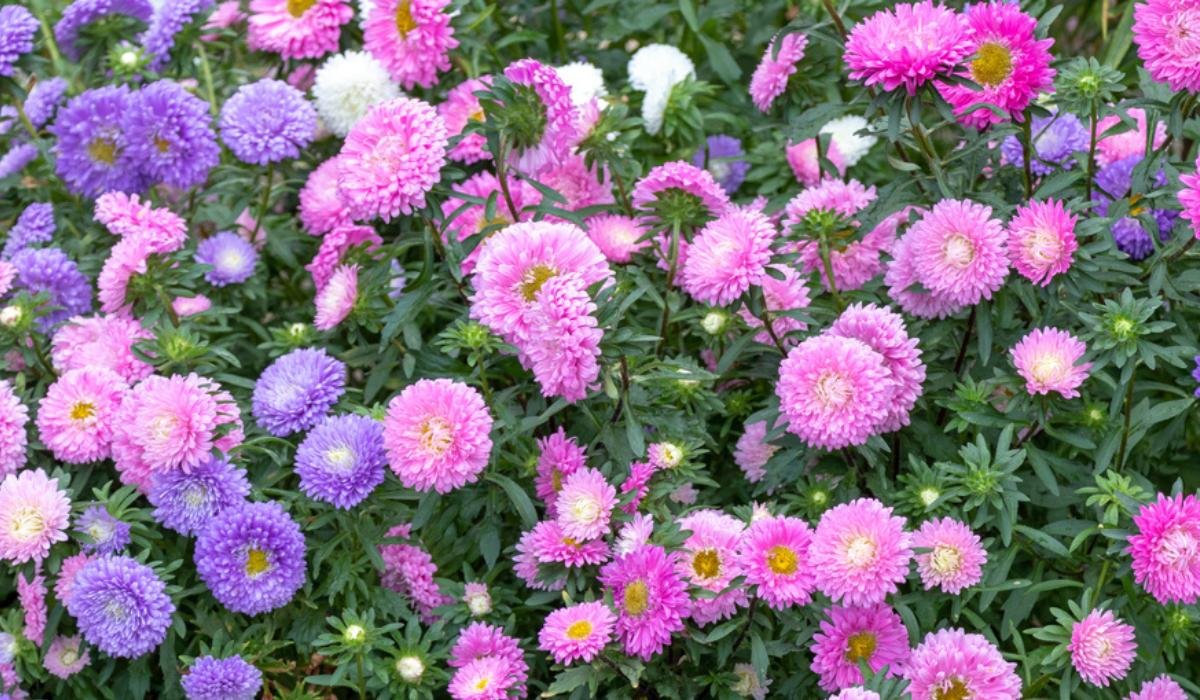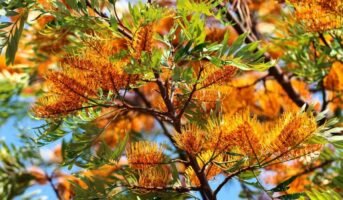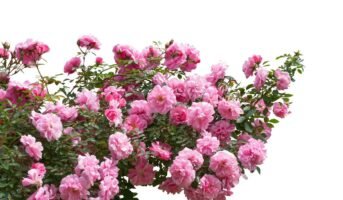The Callistephus, commonly known as the China aster plant, is a species of plant that blooms in the shorter days of the fall season, with buds that bloom from August all the way through October. Belonging to the Asteraceae family, these plants are native to North America.
Although homeowners and nurseries often display the aster with the likes of pumpkins and hay bales, what many people don’t know is that asters are and have been perennials that can become a permanent part of your aesthetic. They’re fast growing and will be ready to boast their flowers with pride before the arrival of the fall season.

Source: Pinterest
Callistephus: Key facts
| Common names | China aster, frost flower |
| Botanical name | Callistephus |
| Family | Asteraceae |
| Plant type | Herbaceous, perennial |
| Mature size | 1-6 ft. tall, 1-4 ft. wide |
| Sun exposure | Full |
| Soil type | Loamy, well-drained |
| Soil pH | Neutral, acidic, between 5.8-6.5 |
| Bloom time | Summer, fall |
| Flower colour | Purple, lavender, pink, blue, white |
| Nativity | North America |
Callistephus: Types
The classification of asters, in the last few years, has grown to be a little complicated, more so to the beginners as they branch out to a categorisation that is more diverse than ever. Regardless, here are the three most popular species of the aster taxonomy.
- Celeste: These aster flowers bloom with ravishing blue tones and bright yellow centres that are just the right shade and amount of colour for the plant.

Source: Pinterest
- Hazy: Particularly early bloomers, these asters consist of raspberry-like tones with yellow centres.

Source: Pinterest
- Puff: The puff aster blooms earlier than most cultivars and is hardier than most too. These flowers are primarily known as cut flowers and bloom in shades of blue, red, yellow and white.

Source: Pinterest
Callistephus: How to grow?
Patience is the name of the game when it comes to the Callistephus, taking several years to mature into full-sized plants from seeds planted in the springtime. While it may dishearten our fellow home growers, it is best to plant China aster from potted nursery specimens.
These plants thrive in loamy, well-draining soil and need an adequate amount of spacing in order for their roots to spread and expand.
These flowers love to soak in the sun as much as possible. Try to give them as less shade as you can, especially for the more commonly found cultivars and hybrids. There are some native species varieties that tend to do well off in the partial shade.
The Callistephus needs its soil to be loamy and well-drained. Keep the soil slightly acidic with a pH that falls between 5.8 to 6.5. If the soil is alkaline, it is preferable to add organic matter such as rotted manure, leaf mould, or compost.
Newer plantings should be kept moist and should be watered regularly until the flowers have finished blooming. To be specific, keep the soil your asters are grown in moist but not saturated with water. One more thing to keep in mind is that you should try to water the base of the soil without letting water splash on the leaves, which can lead to invasive mildew and fungal growth. An inch of rain or watering per week is great for most perennial plants.
As for temperature, asters tend to do well in cooler temperatures and are frost-hardy as well. They can withstand even temporary flares of frosting and can survive under harsh cold conditions as well.
Also, on a similar note, growing asters from seed can be quite tricky and more often than not, germination of these seeds will be difficult. Depending on the variety, these plants may grow up to look nothing like their parent plants and for that reason, propagating from division is the most recommended course of action.
Callistephus: Maintenance and care
Maintaining China asters isn’t particularly hard, but it can be tricky for beginners. Every three years or so, clumped roots should be dug up and separated to keep them from getting woody. Discard the woody centres and keep the surrounding portions as is.
Being moderate feeders, asters prefer being fed fertilisers twice a month, beginning in the spring and continuing until the flowers bloom. Stop fertilising asters when Autumn arrives, as these plants tend to bloom shorter if fed fertiliser more than what is required.
When it comes to pruning or grooming, it’s child’s play. Just pinch off the dead flowers to make way for newer buds and remove wilting or dying stems whenever needed. A simple and effortless pruning trick is to cut the flowers around their full bloom period and bring them inside to enjoy in a vase.
Come Autumn, when the asters stop blooming, keep watering them around 1-2 inches for a few weeks right before the first frost falls. Cut down the foliage after the first frost and cover the asters with mulch to protect the roots during the winter period.

Source: Pinterest
Callistephus: Disease and pest control
While asters are not susceptible to pests or diseases, there are still a few pests and diseases that the aster tends to attract and needs to be taken care of immediately.
The aster tends to be susceptible to rust and powdery mildew disease, which targets the foliage. Simply space the plants adequately and avoid water splashing on the leaves, and you’re good.

Source: Pinterest
As for pests, most insect pests tend to be unbothered by the presence of an aster plant around them, with lace bugs being the exception. While the bugs may go unnoticed for the most part, the damage they do isn’t. If you spot yellowing foliage and leaf dropping in the summer, use insecticide soap on the plants and coat all the sides of the foliage to target the hidden pest.
Callistephus: Uses
The China aster is used strictly for ornamental purposes and doesn’t have any sort of medicinal or culinary uses.
Being colourful and having very diverse, cool hues, these plants make for one of the most coveted houseplant species and tend to not only complement but enhance the overall appearance of whatever background they’re put in.
FAQs
Should I be worried if my aster plant has its leaves curled up?
The curling of leaves is completely natural plant behaviour and nothing to worry about. The curling of leaves is done in order to preserve moisture.
Can you grow asters indoors?
Yes, asters tend to be a very popular choice as ornamental plants and do very well if given the proper care and maintenance. Give them a minimum of 6 hours of sunlight per day and fertilise them once a month, and you're good to go.
How do I differentiate asters from similar-looking plants like daisies, marigolds, sunflowers, chrysanthemums etc.?
While plants like Chrysanthemums, daisies, marigolds and sunflowers do have an appearance similar to that of the Callistephus family, the main differentiating factor would be the diverse colouring of the flowers and deep green leaves that the other plants do not have. Also, asters come in a multitude of cooler colours like blue, white, pink etc.
Housing News Desk is the news desk of leading online real estate portal, Housing.com. Housing News Desk focuses on a variety of topics such as real estate laws, taxes, current news, property trends, home loans, rentals, décor, green homes, home improvement, etc. The main objective of the news desk, is to cover the real estate sector from the perspective of providing information that is useful to the end-user.
Facebook: https://www.facebook.com/housing.com/
Twitter: https://twitter.com/Housing
Email: [email protected]











